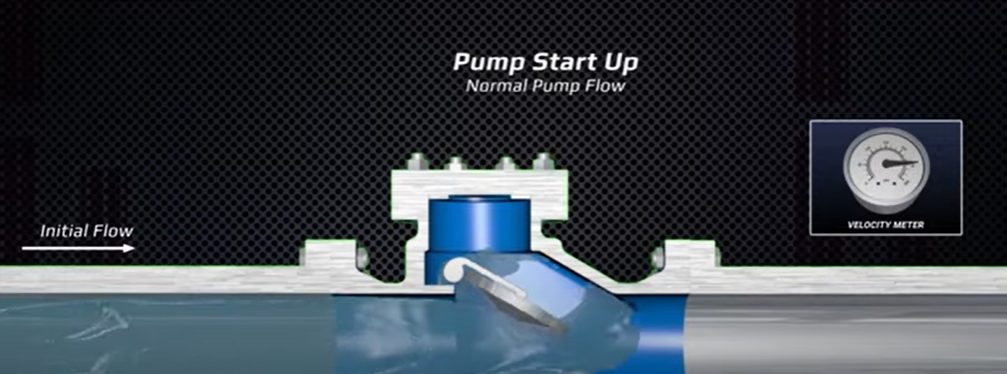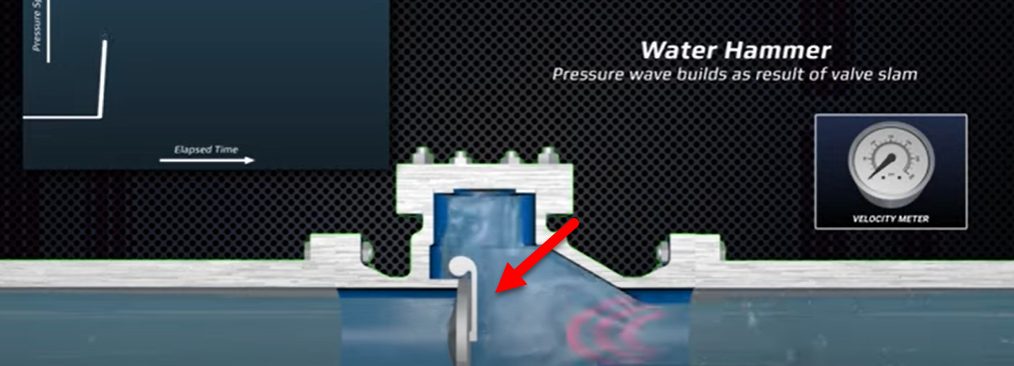What Does Water Hammer Sound Like
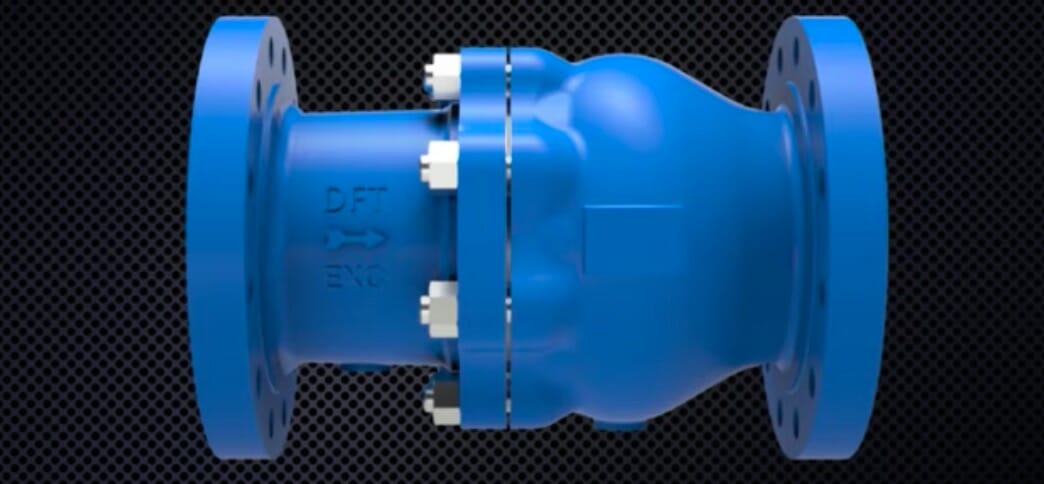
If you experience noise when you turn on the faucet or flush the toilet, your pipes need repairing. Here’s how to identify if it has become a water hammer.
A noisy water pipe could indicate a problem, such as a water hammer, random hammering sounds, squealing pipes or rattling toilets. I will describe what a water hammer sounds like so that you can recognize it for what it is and deal with it accordingly.
What is a Water Hammer?
A water hammer is a loud banging sound, like constant hammering or buzzing. Technically, it is called a hydraulic shock. However, the ‘water hammer’ description is apt because it sounds like a hammer pounding the water inside the pipes.
It often happens when you suddenly turn off a faucet or shower, but it can happen whenever water is shut off abruptly within the plumbing system.
Dishwashers, washing machines, water heaters, blocked air chambers, mineral buildup, and unsecured pipes can cause the same. Such actions or conditions produce high pressure inside the water pipes, which causes the hammering sound.
What’s the Difference Between Water Hammer & Resonance?
You may feel intense vibrations if you touch the water system during a water hammering. In serious cases, the pipes may shake momentarily, and your whole house’s internal structure may reverberate.
Before we learn to deal with a water hammer, learn to distinguish it from resonance. Water resonance is a similar loud banging sound, but more like a ‘jack hammering’. It usually occurs during flushing or the filling process.
What Can We Do About a Water Hammer?
Normally, the water pipes in residential homes contain air cushions to absorb the extra pressure produced by the abrupt closure of a faucet. However, they tend to wear out over time.
If this problem is not dealt with early, repeated water hammering can increase the wear and tear in the pipes. Therefore, a water hammer should never be ignored. It is important to deal with it to prevent further damage to your plumbing system.
We suggest six solutions to deal with a water hammer:
Solution 1: Turn Off the Supply and Flush the System
If you suspect worn-out faucet washers or mineral buildup, turn off the water supply at the mains.
Then, open all cold water faucets starting from those high, flush all the toilets, and allow the water to drain for up to half an hour.
Turn the water supply back on, wait for 5 to 10 minutes for a normal water flow, then close the cold water faucets in the reverse order. If the problem persists, slightly close the shut-off valves to reduce the water flow.
Solution 2: Attach Water/Air Chambers
A water chamber is a capped 12” pipe. It can quieten water hammer noise when attached to the supply line.
If the water flow stops suddenly, the air inside acts as a shock absorber. Water does not compress, whereas air can. If you use a water chamber, you must occasionally remove the water and mineral residue that collects inside it.
Solution 3: Install Water Pressure Regulators
A regulator can be helpful if you are sure high water pressure is causing the water hammer.
Install the regulator at the mains to protect the whole plumbing system, including your appliances. The regulator can adjust the water pressure to an ideal level under 50 psi. (1)
Solution 4: Insulate the Water Pipes
Insulating foam tubes can be placed over water supply lines to cushion them from banging.
They are easy to install, as they are usually pre-slit, so you only need to open them and fit them over the pipes. Not only that, but insulation can also protect your water supply lines from freezing in winter.
Solution 5: Install Water Hammer Arrestors
A water hammer arrestor is more sophisticated than a water/air chamber.
The arrestor is filled with gas and then sealed with a piston. The piston creates a barrier between the water and the gas. An arrestor is usually fitted at intersections between supply tubes and shutoff valves. (2)
Solution 6: Check Appliances’ Solenoid Valves
If a water hammer is only heard when using an appliance, you might just need to change the solenoid valve in the appliance.
It may be acting too rapidly in shutting out the water, causing the shocks. Simply replace the solenoid valve with a new one that does not respond abruptly.
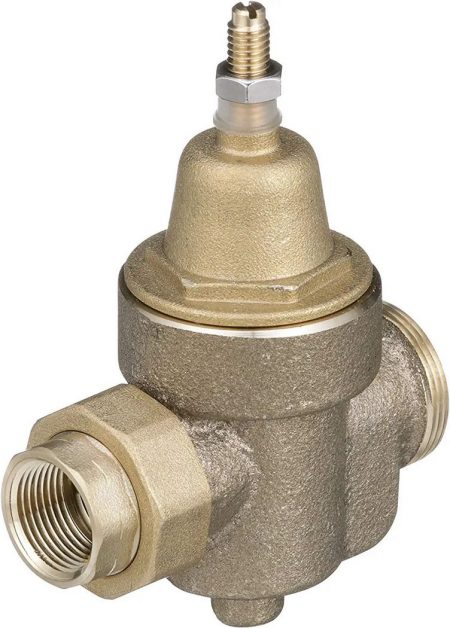
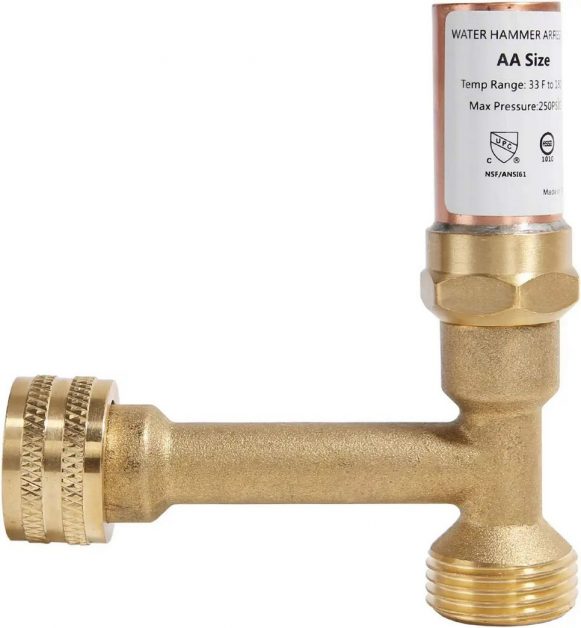
Take a look at some of our related articles below.
References
(1) psi – https://www.techtarget.com/whatis/definition/pounds-per-square-inch-PSI
(2) water and the gas – https://www.thoughtco.com/definition-of-water-gas-605785
Video Reference

